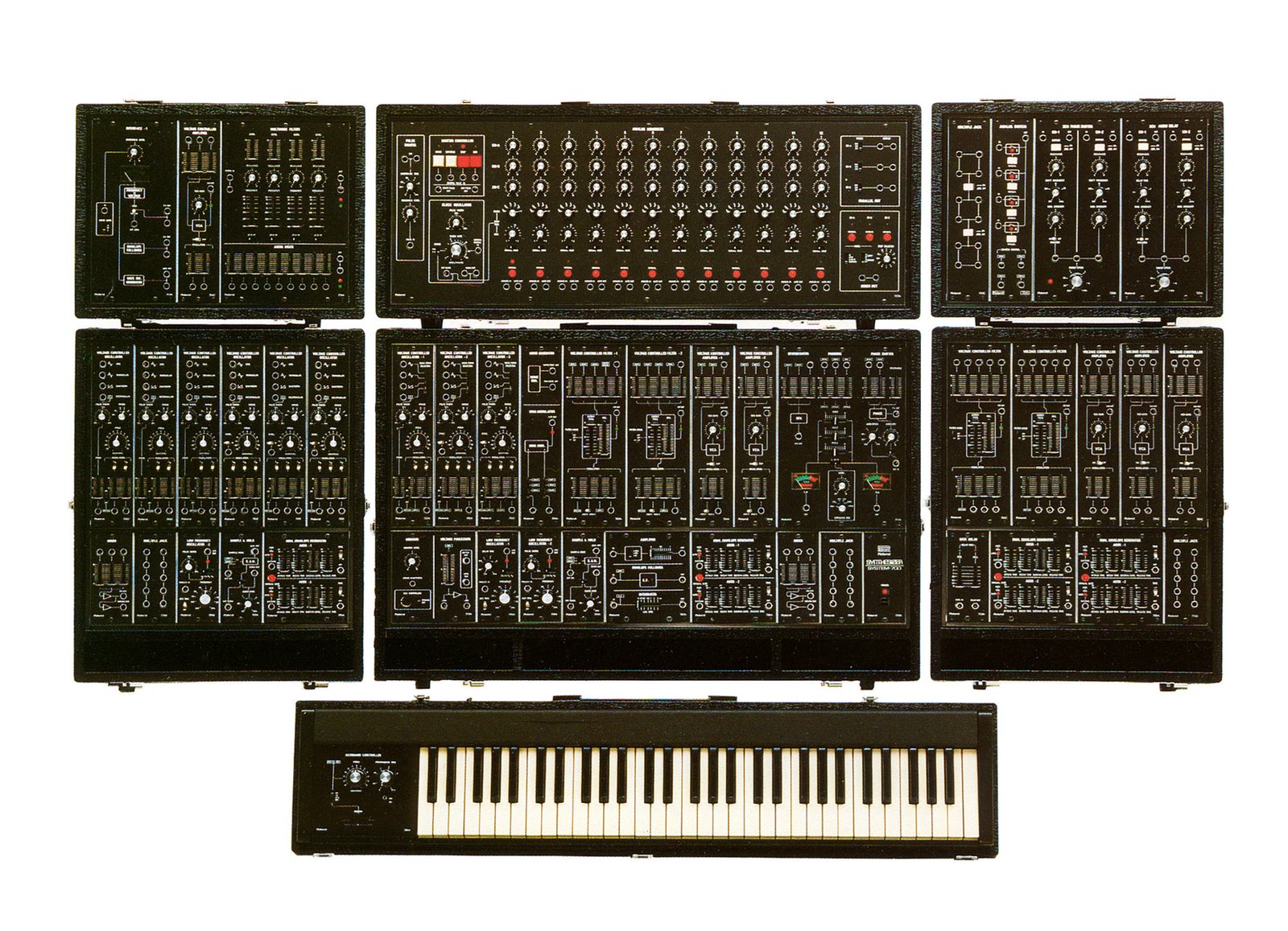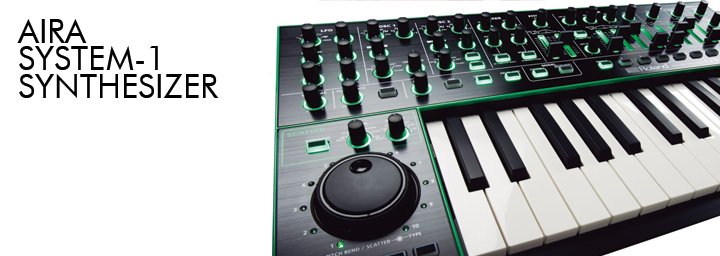Understanding control voltage is the key to mastering the modular synthesizer. Learn more about the language of control voltage in this article.
Contributed by Christian Moraga
The modular synthesizer is back! The boundless world of sounds inside this instrument is fascinating professional musicians and amateurs alike.
This synth (that looks more like a computer network device than instrument) features a series of knobs and jacks, buttons and switches, blinking lights and screens all hidden behind a wall of patch cables. But behind this wall lies an infinite amount of sounds at your disposal – limited only by your imagination and creativity.
But unlocking the secrets of the modular synthesizer requires some basic knowledge. This article, “What is a Modular Synthesizer?” takes a look at the different sections of the synthesizer and is a good starting point in your modular journey.
One major concept that you need to know before patching a cord is CONTROL VOLTAGE or CV. This is the “language” that allows each module to speak to each other. When you start to understand the language of Control Voltage, you will be able to get the most out of each of the modules in your system.
WHY USE CONTROL VOLTAGE?
Take a look at the SYSTEM-700 modular synthesizer below.

To create a truly complex, evolving, one-of-a-kind patch, you will need to be able to turn multiple switches on/off, and turn knobs/sliders at different rates – ALL AT THE SAME TIME. This is not possible, manually, as every synthesist only has two hands.
This is where Control Voltage comes in. CV allows you to sweep filters, alter pitch, change volume of oscillators – all at the same time – hands-free! No need for a keyboard (or a hundred pairs of hands!). All you need is a bunch of patch cables, and some know-how, and you will be truly impressed with your next sonic creation.
THE LANGUAGE OF CONTROL VOLTAGE
Like learning any language, we will need to get back to basics, learn some modular vocabulary and learn how to use Control Voltage.
SO, WHAT IS CONTROL VOLTAGE?
CV is a signal that is measured in volts. The higher the volts, the stronger the signal, or the more “depth” you can use to control a parameter. A full strength signal (often referred to +/- 10V or 10V p/p) can be limited, or “attenuated”, to the range you wish.
To patch a CV signal, you must have a source module that outputs the CV signal (like LFOs, noise sources, ADSR envelopes) to a destination that you want to control, like filter cutoff or the voltage-controlled amplifier. You connect these two points with a patch cable. What you will hear next is a sound as if you were turning the knob in a rhythmic or patterned fashion. Now your hands are free to wiggle other knobs!
TYPES OF CONTROL VOLTAGE SIGNALS
Modulation – These signals (like LFOs, noise sources and ADSR envelopes) “shape” your sound by modulating, or adding movement, to a destination.
Low frequency oscillators (LFOs) have different waveshapes used for control. Noise sources (white, pink) provide a full frequency range that can add some texture to a parameter, like FILTER CUTOFF. Envelopes, like ADSRs, allow you to draw a shape with its four stages, and is commonly used to shape timbre (via the VCF) or volume (via the VCA).
Gate – Gate signals indicate to the destination module when to turn a parameter on or off. It is very well named as it allows an amount of voltage to pass through the gate (5V for example) when opened, and 0V to pass through when closed.
When using a keyboard, the black and white keys send a CV signal out to indicate the pitch/frequency of the note played. It also sends a signal of how long you hold the key down when playing the note (gate open) and when you have released the key (gate closed).
Gate signals are commonly sent to an ADSR envelope to “trigger” the beginning of the envelope (ATTACK) and start of the final stage (RELEASE) when gate is off. The gate signal can also be used to switch or “hold a switch open”. A square-wave LFO can be used as a gate CV signal as it has a 0V minimum and a set maximum voltage.
Trigger – A Gate CV signal is one type of Trigger signal as it can be used to trigger stages of an ADSR envelope (as described above). But trigger signals can also be rhythmic pulse-wave or spike-wave signals, and control the tempo or “clock” of a certain patch.
This type of CV is important when using sequencers as a pitch and gate voltage source. Each sequencer needs to know the tempo in order to output a corresponding CV and Gate signal. This clock signal can then be sent to clock dividers and multipliers, and sent to other modules. This clock will keep your whole synthesizer patch locked in tempo.
USING CONTROL VOLTAGE WITH THE SYSTEM-1m
The AIRA SYSTEM-1m is a semi-modular synthesizer with PLUG-OUT capability and a unique design that can be used as a Eurorack module, tabletop synth, or 19” rackmount unit. In addition to being a powerful standalone instrument, the SYSTEM-1m has external inputs and an array of CV/Gate connections that allow it to be re-patched and to interface with other modular synthesizer systems. The SYSTEM-1m’s CV/Gate connections combined with its ability to load classic Roland PLUG-OUT synth models like the SH-101 and PROMARS give it power and flexibility that is simply unparalleled.
The control voltage patch bay atop of the SYSTEM-1m is divided into two groups of coloured jacks; red indicates audio signals and blue indicates control voltage. The image below is a guide to all of the control voltage inputs and outputs in the SYSTEM-1m synthesizer – click on the image to expand.
PRO TIP: Send three different external LFOs or envelopes into the PITCH, FILTER and AMP ENV inputs. You can now use these modulation sources to control the COLOR control using the selector knob. This tip unlocks a world of sounds with the new six waveforms of the SYSTEM-1/1m Version 1.20 update.
In this video series below, Dr. Richard Boulanger (professor at Berklee College of Music) takes you through how to utilise control voltage with the SYSTEM-1m synthesizer. “Dr. B” shows the power of control voltage with the SYSTEM-1m synth, and its PLUG-OUT technology, and how to integrate the SYSTEM-1m into your own personal synthesizers that use CV signals.
Now it’s time to get your hands on some modulators, gates and triggers, and discover a tonne of tonal possibilities not yet heard. The world of modular synthesis becomes addictive quickly, and discovering a new instrument through the language of control voltage will start you on a very inspired and creative path.






